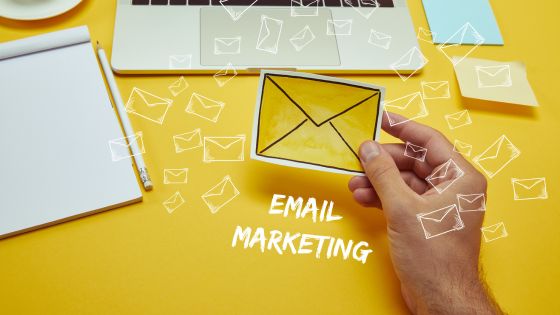In the ever-evolving landscape of retail and consumer brands, email marketing remains a potent tool for reaching and engaging customers.
To succeed in this competitive space, it’s crucial for retailers and consumer brands to employ effective email marketing strategies.

In this guide, we’ll explore essential tips and strategies that can help retailers and consumer brands maximize the impact of their email marketing efforts.
1. Personalization – The Key to Customer Engagement
Personalization is at the heart of effective B2C email marketing.
Customers expect tailored experiences, and personalizing your emails can significantly boost engagement.
Address recipients by their first names and use their purchase history and preferences to recommend products or content they might like.
For instance, “Hi Alfred, Based on Your Recent Purchase, You Might Also Like…”
2. Compelling Subject Lines
Crafting compelling subject lines is essential to entice recipients to open your emails.
Make them concise, relevant, and attention-grabbing. Use language that sparks curiosity or offers clear benefits.
For example, “Joey, Don’t Miss Out: Special 1-Day Sale Inside!”
3. Mobile Optimization
A vast majority of consumers typically check their emails, both personal and official, on their mobile devices.
Therefore, ensure that your marketing or promotional emails are mobile-responsive, with easy-to-read fonts and clear calls to action.
Test your emails on various mobile devices to guarantee a seamless experience.
For example, use a responsive email template that adjusts to different screen sizes.
4. Visual Content
Images and videos can make your emails visually appealing and help showcase your products.
Include high-quality visuals that highlight key features and benefits.
For example, clothing retailers can include images of models wearing their latest collection to give customers a better idea of how the products look.
5. Segmentation
You may wonder, how to segment an email list. Well, it’s done logically.
You need to segment your customer email list based on how their behavior is, their demographics, or their purchase history.
This allows you to send targeted messages to different customer groups, increasing relevance and engagement.
For example, segment your list to send promotions for winter clothing to customers in colder regions and summer apparel to those in warmer climates.
6. Abandoned Cart Emails
Cart abandonment is not an uncommon issue in e-commerce these days.
Send automated emails to remind customers about their abandoned carts and offer incentives like discounts or free shipping to encourage them to complete their purchases.
Here is an example, “Still Interested? Complete Your Purchase with 10% Off!”
7. Email Finder Tools
To expand your reach and acquire new customers, consider using email finder tools to discover the email addresses of potential leads.
These tools can help you reach out to a broader audience and grow your customer base.
For example, use an email finder tool to locate contact information for potential customers who have shown interest in your industry.
8. Customer Reviews and Testimonials
Include customer reviews and testimonials in your emails to build trust and credibility. Showcase positive experiences from real customers to persuade others to make a purchase.
Example: “See What Our Happy Customer Meetha Has to Say…”
9. A/B Testing
Experiment with different elements of your emails, such as subject lines, images, and CTAs, using A/B testing. Analyze the results to fine-tune your email content and improve performance.
For example, test two different subject lines to determine which one generates higher open rates.
10. Post-Purchase Follow-Up
After a customer completes a purchase with your brand, follow up with a transaction confirmation email and thank-you email. Include order details, delivery information, and links to related products or content that might interest them.
For example, “Thank You for Your Order! Here’s What to Expect Next…”
11. Analyze and Optimize
Regularly analyze email metrics like your campaign email open rates, click-through rates, and conversion rates.
Make use of these insights to enhance/optimize your email marketing strategy continually.
Pay close attention to what works and adjust your approach accordingly.
Concluding Thoughts
In conclusion, effective email marketing is a vital component of success for retailers and consumer brands.
By personalizing content, optimizing for mobile, and leveraging segmentation, you can engage customers on a deeper level.
Additionally, using email finder tools can help you expand your reach, while A/B testing and post-purchase follow-ups can enhance your overall email marketing strategy.
Keep refining your approach based on analytics to ensure that your emails continue to drive customer engagement and boost sales for your retail or consumer brand.
